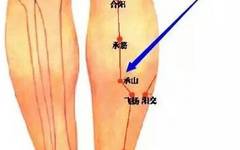Yao Bei Cheng Shan Qiu (Yao Bei Cheng Shan Point), Du Fu Gong Sun Liu (Du Fu Gong Sun Point),
Tou Ding Xun Feng Chi (Tou Ding Xun Feng Chi Point), Mian Kou Di Cang Shou (Mian Kou Di Cang Point),
Ke Chuan Qu Er Ding (Ke Chuan Qu Er Ding Point), Ye Ti Er Zhu Mou (Ye Ti Er Zhu Point),
Xiao Fu San Yin Jiao (Xiao Fu San Yin Jiao Point), Zhuan Tai Zhi Yin Jiu (Zhuan Tai Zhi Yin Point),
Er Gou Tong Bian Mi (Er Gou Tong Bian Point), Yin Bai Ting Beng Lou (Yin Bai Ting Beng Point),
Bi Zhuan Dang Quan Zhi (Bi Zhuan Dang Quan Point), Xin Wei Nei Guan Shu (Xin Wei Nei Guan Point),
Leg Pain Ci Zhong Hai (Leg Pain Ci Zhong Hai Point), Mu Ji Tou Zuan Zhu (Mu Ji Tou Zuan Zhu Point),
Da Zhui Jie Xian Re (Da Zhui Jie Xian Point), Shao Shang Li Yan Hou (Shao Shang Li Yan Point),
A Shi Juan Suan Tong (A Shi Juan Suan Point), Ren Zhong Shan Ji Jiu (Ren Zhong Shan Ji Point),
Xuan Yun Jue Gu Mi (Xuan Yun Jue Gu Point), Shi Mian An Shen Sou (Shi Mian An Shen Point),
Gan Ji Si Feng Miao (Gan Ji Si Feng Point), Bu Xu Guan Yuan You (Bu Xu Guan Yuan Point),
Xin Ji Zhen Tong Li (Xin Ji Zhen Tong Point), Gan Shen Tiao Li Gou (Gan Shen Tiao Li Point),
Yi Niao Suo Quan Qiu (Yi Niao Suo Quan Point), Wei Tong Er Wan Liu (Wei Tong Er Wan Point),
Chang Ying Xun Lan Wei (Chang Ying Xun Lan Point), Niao Pin Er Xi Shou (Niao Pin Er Xi Point).
1. Yao Bei Cheng Shan Qiu
Cheng Shan is primarily used for treating lower back pain, leg pain, cramps, constipation, hemorrhoids, and prolapse. The author believes that lower back pain is mainly a condition of the Foot Taiyang Bladder Meridian, where the Kidney and Bladder are interrelated; the lower back is the organ of the Kidney, and lower back pain is an external manifestation of Kidney disease.
Acupuncture meridian point diagrams suggest that for excess-type lower back pain, it is advisable to combine with A Shi, Kun Lun, and Zhi Shi points in the lumbar region, primarily using acupuncture, or to use a three-edged needle for bloodletting. For deficiency-type lower back pain, it is advisable to combine with Shen Shu, Ming Men, and Guan Yuan, primarily using moxibustion. The “Ma Dan Yang Tian Xing Twelve Points for Treating Various Diseases” states that Cheng Shan: “…is good for treating lower back pain, hemorrhoids, and difficult bowel movements…”.
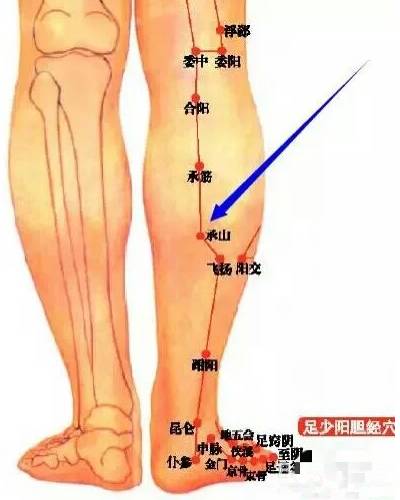
Acupuncture Treatment:
(1) Acute lumbar muscle strain: Cheng Shan, Wai Guan plus ear acupuncture: lumbar vertebrae, Shen Men.
(2) Shoulder and back soreness: Cheng Shan, Tian Zong, either acupuncture or moxibustion, both are effective.
2. Du Fu Gong Sun Liu
Gong Sun belongs to the Foot Taiyin Spleen Meridian and is its connecting point, able to link the Spleen and Stomach meridians. It is one of the eight extraordinary meridian meeting points, with functions of strengthening the Spleen and Stomach; regulating the intestines, digesting food, clearing heat, and benefiting dampness, primarily treating stomach pain, vomiting, hiccups, indigestion, abdominal pain, bloating, acute and chronic enteritis, dysentery, gynecological diseases, and headaches.
It has been reported that “Needling the Gong Sun point in normal individuals can significantly increase the pain threshold in the abdomen.”
Acupuncture Treatment:
For abdominal pain and stomach bloating: Gong Sun, Nei Guan, Zu San Li, combined with internal herbal medicine for better efficacy.
“Xi Hong Fu” states: “For abdominal pain, Gong Sun is essential, and Nei Guan must correspond to ensure healing,” while “Lan Jiang Fu” states: “For diseases in the chest, Nei Guan is responsible, and Gong Sun is used below the navel.”
3. Tou Ding Xun Feng Chi
Feng Chi belongs to the Foot Shaoyang Gallbladder Meridian, with functions of clearing the head, brightening the eyes, dispelling wind, relieving heat, and unblocking the orifices. The Liver and Gallbladder are interrelated, with the Liver being the organ of wind and water. It is easy for fire to transform into wind, disturbing the clear orifices; the Gallbladder is attached to the Liver, and the fire of the Liver and Gallbladder can easily disturb the meridians. It is said that “all dizziness belongs to the Liver”.
For dizziness due to wind and external wind pathogens, this point can be used. The Foot Shaoyang and Yang Wei meridians meet at Feng Chi, and the Yang Wei meridian connects to the Du meridian, which enters the brain, “the brain is the residence of the Yuan Shen”. This point can treat various diseases of the neck, ears, eyes, side of the head, and brain.
Acupuncture Treatment:
(1) Migraine: Feng Chi, Nei Guan, Feng Long, Bai Hui.
(2) Neck stiffness: Feng Chi, Tian Zhu, Yang Ling Quan, Xuan Zhong.
4. Mian Kou Di Cang Shou
Di Cang belongs to the Foot Yangming Stomach Meridian, being the meeting point of the Hand and Foot Yangming meridians and the Yang Qiao Meridian, with effects of dispelling wind, unblocking the meridians, and harmonizing Qi and blood. It can treat all diseases in the facial area.
Acupuncture Treatment:
For facial nerve paralysis: Di Cang, Jia Che, He Gu, Feng Long, Feng Chi.
For drooling in children: Di Cang, He Gu, Cheng Jiang, Zu San Li. “Long Guang Fu” states: “Di Cang can stop drooling.”
Additionally, Di Cang has certain efficacy for trigeminal neuralgia and facial nerve paralysis, and is often used in acupuncture beauty treatments, being a key point for treating mouth wrinkles.
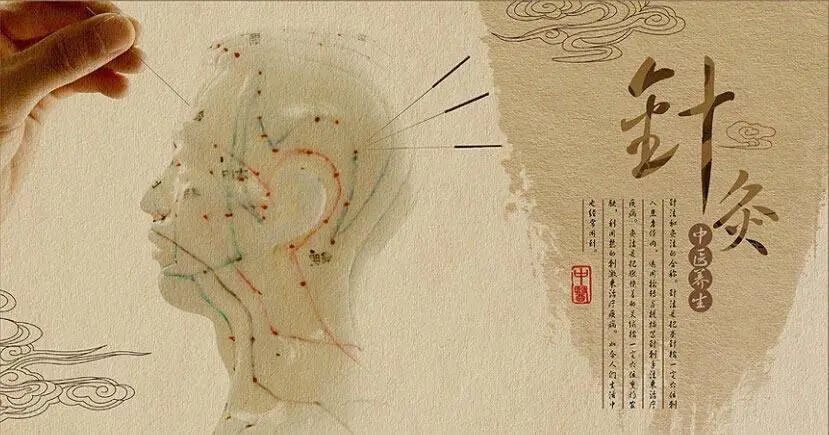
5. Ke Chuan Qu Er Ding
“Er Ding” is an abbreviation for Ding Chuan and Ding Ke, with Ding Chuan being an extraordinary point located at the back of the neck.
Main Treatment: Asthma, cough, back pain, and cervical spondylosis.
Ding Ke is a point used based on the author’s experience, located 1 inch lateral to the Jueyin Shu, which is 2.5 inches lateral to the spinous process of the 4th thoracic vertebra.
Acupuncture Treatment:
Er Ding combined with Da Zhui (moxibustion) and Zu San Li (moxibustion) can prevent and treat colds in children.
6. Ye Ti Er Zhu Mou:
The Shen Zhu and Tian Zhu are collectively known as “Er Zhu”.
Shen Zhu: is a key point of the Du Meridian, with effects of stopping cough, relieving asthma, strengthening the body, enhancing intelligence, calming the mind, and relieving pain. The famous Japanese acupuncturist Dai Tian Wen Zhi pointed out that moxibustion on the Shen Zhu point in children can promote lung Qi, improve the body’s resistance to disease, and can treat various diseases in children.
Tian Zhu belongs to the Foot Taiyang Bladder Meridian, and many years of clinical experience have confirmed that this point, located in the head and neck, can effectively treat insomnia, night crying, neurasthenia, colds, and cervical spondylosis, and can also treat epilepsy and mania.
Pediatric expert Mr. Peng Zi Yu is skilled in using “Er Zhu” to treat pediatric diseases, often used for nighttime sleep, and in combination with herbal medicine, the effects are even better.
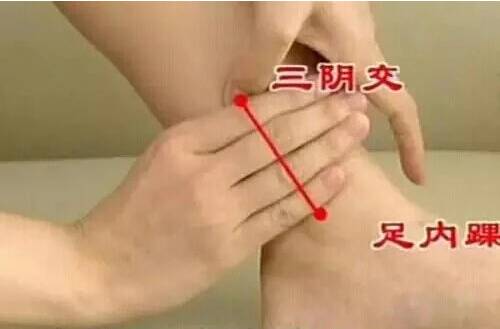
7. Xiao Fu San Yin Jiao
San Yin Jiao is the meeting point of the Foot Taiyin, Jueyin, and Shaoyin meridians.
8. Zhuan Tai Zhi Yin Jiu
Zhi Yin is a key point of the Foot Taiyang Bladder Meridian, one of the five transport points, and is the Jing point of this meridian, treating headaches above and regulating childbirth below.
Acupuncture Treatment:
For abnormal fetal position combined with body weakness, moxibustion on the Zhi Yin point while selecting San Yin Jiao or Zu San Li points.
9. Er Gou Tong Bian Mi
Er Gou refers to Zhi Gou and the experience point Heng Gou. Zhi Gou is a fire point of the Hand Shaoyang Sanjiao Meridian, beneficial for the Sanjiao, regulating Qi mechanism, harmonizing the chest and ribs, strengthening the Spleen and Stomach, descending rebellious Qi, stopping vomiting, and clearing heat to unblock the bowels, primarily treating rib pain, vomiting, and constipation.
“Heng Gou” is located one inch outside the Da Heng point, measured down five fen, and is one of the experience points used by ancestors to treat constipation.
Acupuncture Treatment:
(1) For constipation with vomiting: Er Gou combined with Nei Guan.
(2) For long-term constipation with abdominal pain: Er Gou combined with Chang Gu point.
10. Yin Bai Ting Beng Lou
Yin Bai belongs to the Foot Taiyin Spleen Meridian, a Jing point, effective for strengthening the Spleen, benefiting Qi, and controlling blood. It is commonly used for hemorrhagic diseases, and for conditions of excessive bleeding, moxibustion therapy often yields results.
Some have reported that moxibustion at the right time has very good effects. For over thirty years, I have often used moxibustion as the main treatment for women’s excessive bleeding, and when combined with internal herbal medicine, the efficacy is reliable in 90% of cases.
11. Bi Zhuan Dang Kong Zhi
Dang Kong is an abbreviation for Dang Quan and Kong Zui points.
“Dang Quan” is a point used by Japanese acupuncturist Saito Ansei for treating epistaxis, while Kong Zui is a Xi point of the Hand Taiyin Lung Meridian, often used for cough, asthma, hemoptysis, chest pain, sore throat, and hoarseness, with functions of regulating lung Qi and clearing heat to stop bleeding. In over thirty years of clinical practice, needling this point has shown significant effects in stopping bleeding. In recent years, combining finger pressure on the Dang Quan point can enhance treatment effects. If only finger pressure is applied, it can also yield results.
Acupuncture Treatment:
For epistaxis with dizziness and headache: Dang Quan, Kong Zui, combined with Yin Tang, Feng Chi.
12. Xin Wei Nei Guan Shu
Nei Guan is a meridian point of the Hand Jueyin Pericardium, an eight extraordinary meridian meeting point, with functions of calming the mind, soothing the spirit, harmonizing the stomach, descending rebellious Qi, broadening the chest, regulating Qi, and relieving pain.
It should be emphasized that Nei Guan connects to the Yin Wei, and the Yin Wei meridian meets with the Foot Three Yin meridians at the Ren Meridian, and also connects with the Foot Yangming Stomach Meridian. These meridians all circulate through the chest, abdomen, and ribs, hence “Yin Wei is the source of heart pain”. The heart pain here refers to internal organ diseases of the heart, chest, stomach, ribs, and abdomen.
In summary, Nei Guan has a definite therapeutic effect on diseases of the heart, chest, stomach, ribs, and abdomen.
More than ten years ago, I had the opportunity to study at the Acupuncture Research Institute of the China Academy of Chinese Medical Sciences in Beijing, where I was fortunate to receive personal guidance from Professor Cheng Xin Nong, who believed that Nei Guan is an important point for treating stomach diseases and heart-related conditions. For stomach pain and abdominal distension, Professor Cheng often used Nei Guan, Zu San Li, Zhong Wan, and Gong Sun points, which were very effective.
Acupuncture Treatment:
(1) For stomach pain and chest tightness: Nei Guan, Jian Li, Shang Wan.
(2) For palpitations and insomnia: Nei Guan, Shen Men, Dan Zhong. “Lan Jiang Fu” states: “For pain in the chest, Nei Guan is responsible.”
13. Leg Pain Ci Zhong Hai
Ci Zhong Hai is located two inches above the Huan Tiao point, one inch laterally.
I was fortunate to learn from Mr. Wan Yun Cheng (known as “Wan Shen Zhen”) about the miraculous point for treating lower limb paralysis and rheumatic leg pain—Ci Zhong Hai. In over thirty years of practice, I have found that this point is commonly used for lower limb disorders, and for severe lower back and leg pain, I often combine Shen Shu, Ci Zhong Hai, and Xuan Zhong points, and have experienced enhanced efficacy since adding Ci Zhong Hai.
Acupuncture Treatment:
For lower back and leg pain, use Ci Zhong Hai combined with Shen Shu, Zu San Li, either acupuncture or moxibustion.
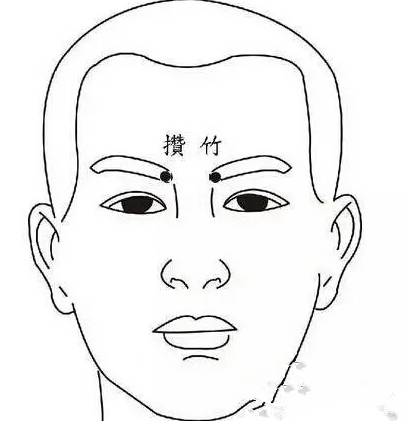
14. Mu Ji Tou Zuan Zhu
Zuan Zhu is a key point of the Foot Taiyang Bladder Meridian, effective for treating eye diseases.
Acupuncture Treatment:
(1) For head and eye pain: use Zuan Zhu, He Gu, Feng Chi.
(2) For bilateral eye redness and swelling: use Zuan Zhu, Tai Yang (three-edged needle for bloodletting), He Gu, Er Jian (three-edged needle for bloodletting).
“Bai Zheng Fu” states: “For blurred vision, urgently seek Zuan Zhu among the three points.”
15. Da Zhui Jie Xian Re
Da Zhui is located in the depression below the spinous process of the seventh cervical vertebra, first level the shoulders to locate it, then have the patient slowly shake their head, allowing the seventh cervical vertebra to move (the next vertebra, the first thoracic vertebra, will not move);
This method makes locating Da Zhui more convenient. Da Zhui is a meeting point of the Hand and Foot Taiyang meridians and the Du Meridian, governing the Yang Qi of the whole body. This point is essential for dispelling Yang pathogens and regulating Yang Qi, with good functions of dispelling wind, clearing heat, calming the mind, and stopping seizures.
“The Du Meridian is the source of disease; if the spine is strong, it will not bend.” This point is one of the first choices for convulsions caused by brain diseases and epilepsy.
Acupuncture Treatment:
(1) For cold and fever: Da Zhui, He Gu, Nei Guan, Qu Chi.
(2) For epilepsy: Da Zhui, Shen Zhu, Feng Long, He Gu, Tai Chong.
16. Shao Shang Li Yan Hou
Shao Shang belongs to the Hand Taiyin Lung Meridian, with primary effects of clearing heat, relieving exterior conditions, and unblocking the throat.
This point can clear lung heat internally and disperse wind-heat externally, making it a key point for treating sore throat, with certain efficacy for colds, coughs, epistaxis, mumps, and hoarseness.
Shao Shang is a Jing point of the Lung Meridian, also having the functions of opening the orifices, awakening the spirit, relaxing the muscles, and clearing heat to relieve pain. As stated in the “Shi Hou Ge”: “…when hot blood flows into the heart and lungs, one must use the golden needle to prick Shao Shang.”
My father often used a three-edged needle to prick Shao Shang for acute sore throat, with slight bleeding; if the effect was not significant on the first day, he would add needling to He Gu the next day, which yielded good results.
Acupuncture Treatment:
(1) For acute laryngitis: use Shao Shang (bloodletting) and He Gu, Zhao Hai.
(2) For chronic pharyngitis: use Shao Shang (bloodletting), Tian Tu, Tai Xi, all effective.
17. A Shi Juan Suan Tong
A Shi point—also known as Tian Ying point. When there is a pathological change in the body, pressing a certain area will cause increased pain, swelling, or numbness, and that point is the A Shi point, hence also called an undefined point.
The A Shi point is where there is pain or swelling, and also where the meridians are blocked. By pressing and exploring, one can find the “quick relief” point, thus through treatment at the A Shi point, the body can be adjusted, the meridians can be unblocked, and pain can be alleviated. As stated in the “Yu Long Ge”: “When the whole body is in pain, it is not a common disease; one must carefully examine the undefined points.”
Acupuncture Treatment:
(1) For headaches: A Shi, Feng Chi, Bai Hui, He Gu, Wai Guan, Tai Yang.
(2) For sciatica: A Shi, Huan Tiao, Cheng Fu, Yin Ling Quan, Cheng Shan.
18. Ren Zhong Shan Ji Jiu
Ren Zhong is the key point of the whole body, the Du Meridian, and the meeting point of the Hand and Foot Yangming. It is adept at treating mental and psychological disorders, such as: coma, mania, seizures, children’s acute and chronic convulsions, heat stroke, hysteria, trigeminal neuralgia, and is also effective for other conditions like sprains and motion sickness.
Acupuncture Treatment:
(1) For coma: Ren Zhong plus needling to Shi Xuan (bloodletting).
(2) For children’s acute convulsions: Ren Zhong plus needling to Yin Tang, Nei Guan, Zu San Li.
(3) For hysteria: Ren Zhong plus needling to He Gu, Nei Guan, Feng Long.
It has been reported that needling this point has a relatively specific effect on adjusting respiratory function, and its acupuncture effect is closely related to the state of the respiratory center function, especially when the respiratory center is failing, the effect is more pronounced.
It has a significant anti-shock effect on experimental shock animals; when blood pressure drops to (10-40 mmHg) and breathing stops, needling “Ren Zhong” can restore the majority of cases.
19. Xuan Yun Jue Gu Mi
Xuan Zhong belongs to the Gallbladder Meridian, which is of wood nature, primarily governing the smooth flow of Qi. The Liver and Kidney are of the same origin, and the Liver and Gallbladder are interrelated, indicating the relationship between the Gallbladder and Kidney. The Kidney governs the storage of essence, which generates water. The “Nei Jing” states: “All dizziness belongs to the Liver”.
Zhang Jing Yue once proposed: “There is no deficiency that does not cause dizziness,” and the “Zhi Zhi Fang” also states: “Stagnation and blockage can cause dizziness.” Needling Xuan Zhong can soothe the Liver, regulate Qi, nourish the marrow, and strengthen the brain, thus improving conditions related to hypertension and dizziness.
Research shows: This point has a lowering effect on hypertension, especially effective for stage III hypertension.
Acupuncture Treatment: For hypertension and dizziness: Xuan Zhong, Feng Chi, San Yin Jiao, Feng Long, He Gu, Tai Chong.
20. Shi Mian An Shen Sou
An Shen is a point I commonly use based on experience.
Acupuncture Treatment:
(1) For stubborn insomnia: An Shen, San Yin Jiao, Zu San Li. “Jia Yi Jing” states: “For fright-induced insomnia, San Yin Jiao is the main point.”
(2) For long-term insomnia with Spleen deficiency and food stagnation: An Shen, Gong Sun, Nei Guan points are effective, combined with herbal medicine for better results.
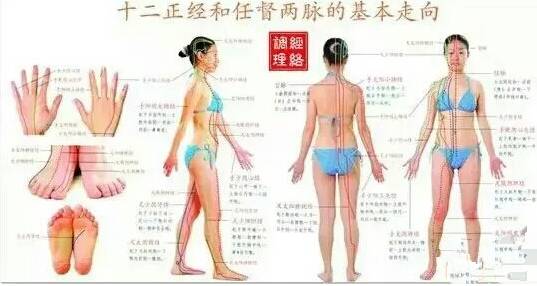
21. Gan Ji Si Feng Miao
Si Feng is an extraordinary point, first recorded in the “Qi Xiao Liang Fang” book. It is located in the transverse creases between the first and second joints of the index, middle, ring, and little fingers.
Acupuncture Treatment:
(1) For significant vomiting: add needling to Nei Guan, Cheng Man.
(2) For significant diarrhea: add needling to Chang Gu, Zhong Wan.
(3) For significant constipation: add needling to Zhi Gou, Heng Gou.
(4) For weakness and emaciation: add needling to Zu San Li, Da Zhui.
Si Feng point strengthens the Spleen and Stomach, stops diarrhea and cough, and is particularly effective for treating malnutrition and loss of appetite, as well as for whooping cough.
22. Bu Xu Guan Yuan You
Guan Yuan is also known as Da Zhong Ji, Dan Tian, and is one of the three major strengthening points of the body (along with Zu San Li and Da Zhui), known for nourishing Kidney Qi, strengthening the foundation, and enhancing physical health.
Acupuncture Treatment:
For infertility: Guan Yuan, through Zhong Ji, Zi Gong, Tai Xi, Tai Chong, San Yin Jiao.
It is also widely used in male reproductive health, effectively treating impotence, premature ejaculation, male infertility, and prostatitis. It can also be used for enuresis, chronic enteritis, and other conditions.
Acupuncture Treatment:
For impotence: Guan Yuan, through Zhong Ji, Nei Guan, Zu San Li, Tai Xi, Zhi Shi, this is a formula often used by my father.
23. Xin Ji Zhen Tong Li
Tong Li is adept at treating palpitations, and is often used as a primary point for mental and emotional disorders. Clinical evidence shows that it is effective for arrhythmias, neurasthenia, hysteria, depression, and insomnia.
In the “Ma Dan Yang Tian Xing Twelve Points for Treating Various Diseases”, it states: “San Li, Nei Ting, Qu Chi, He Gu connect… Huan Tiao and Yang Ling, Tong Li is also listed…” This shows the importance acupuncturists place on it.
Acupuncture Treatment:
For arrhythmias: Tong Li, Shen Men, Nei Guan, Dan Zhong, San Yin Jiao, Zu San Li.
Give a thumbs up and let’s work together for health!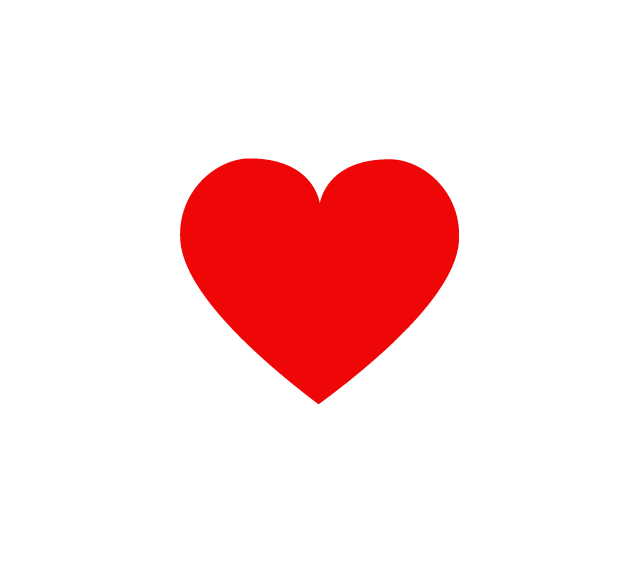
_Follow us by clicking the “business card” below
Light it up so more people can see👇

